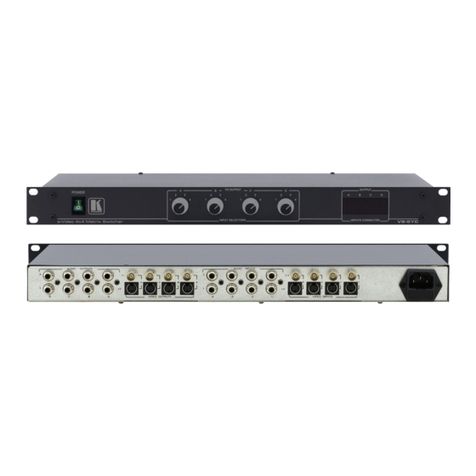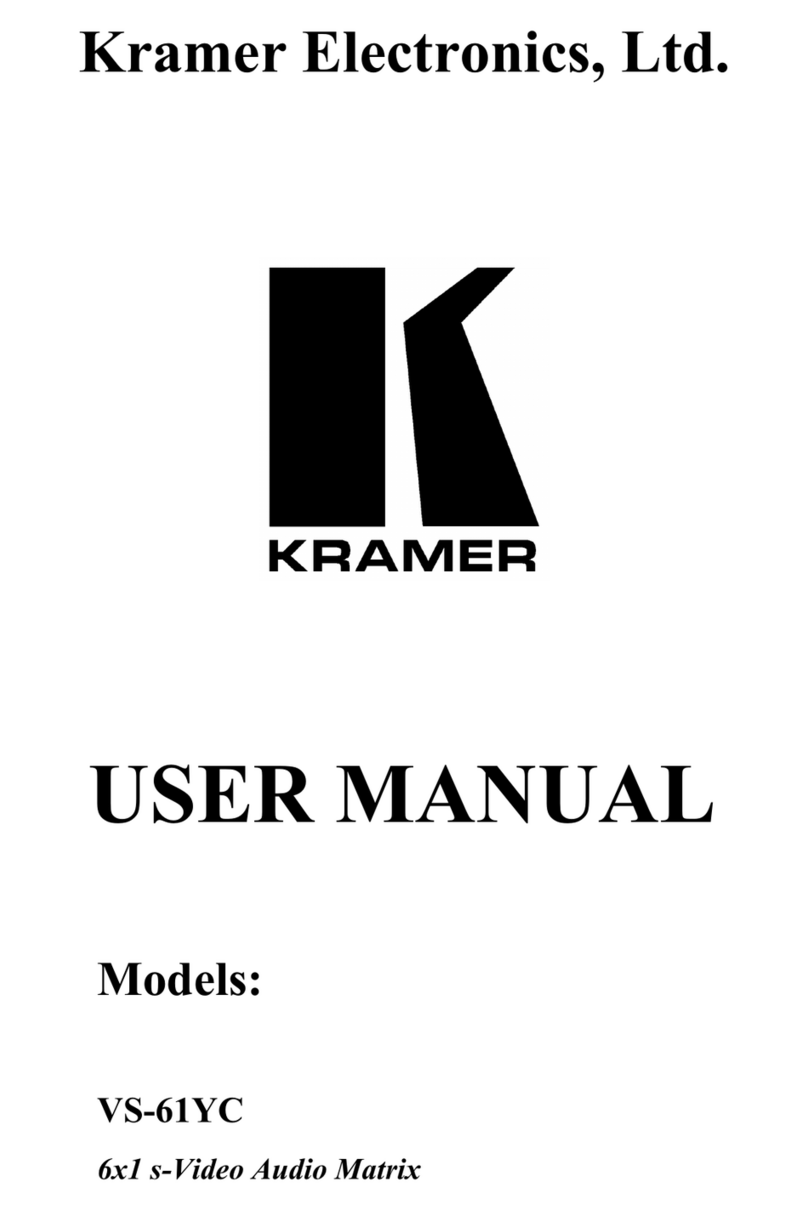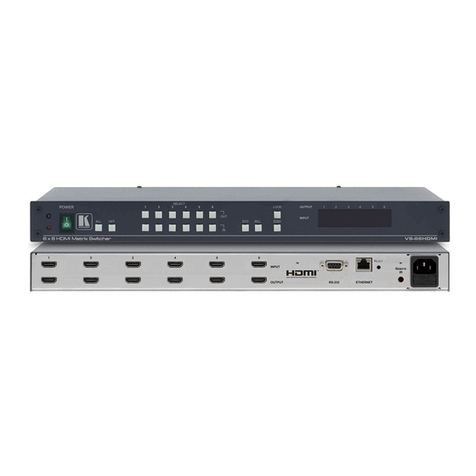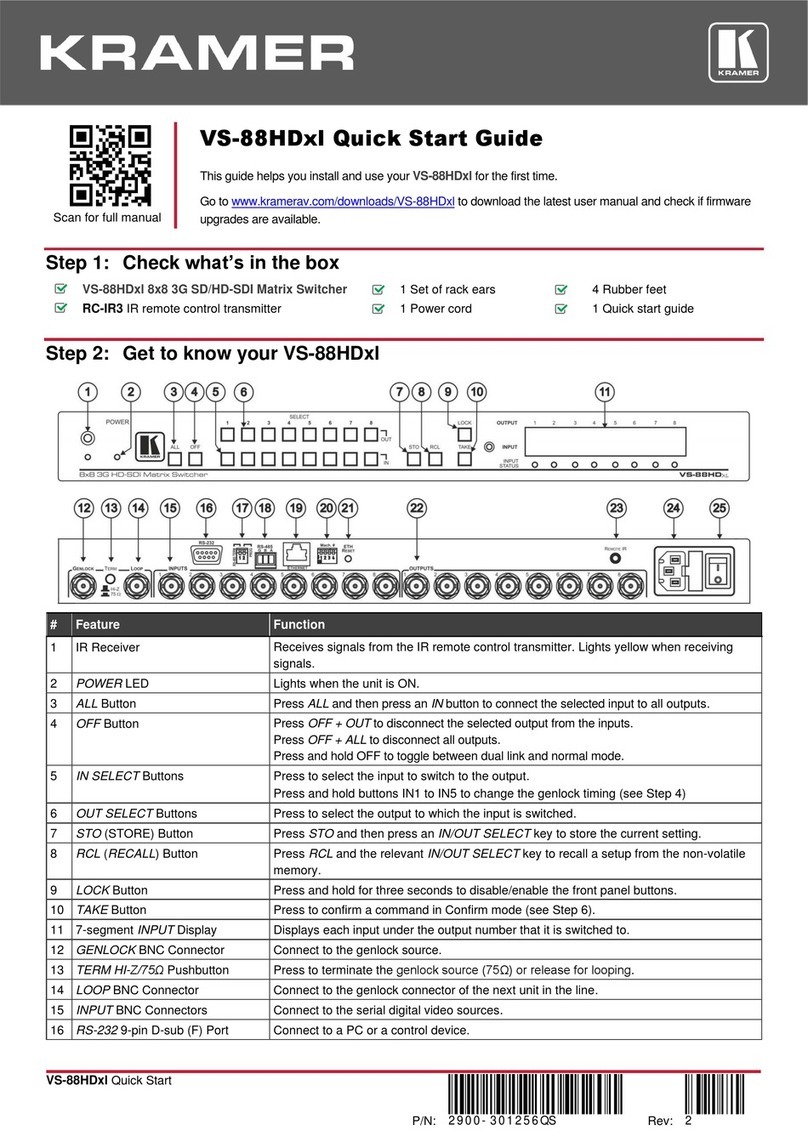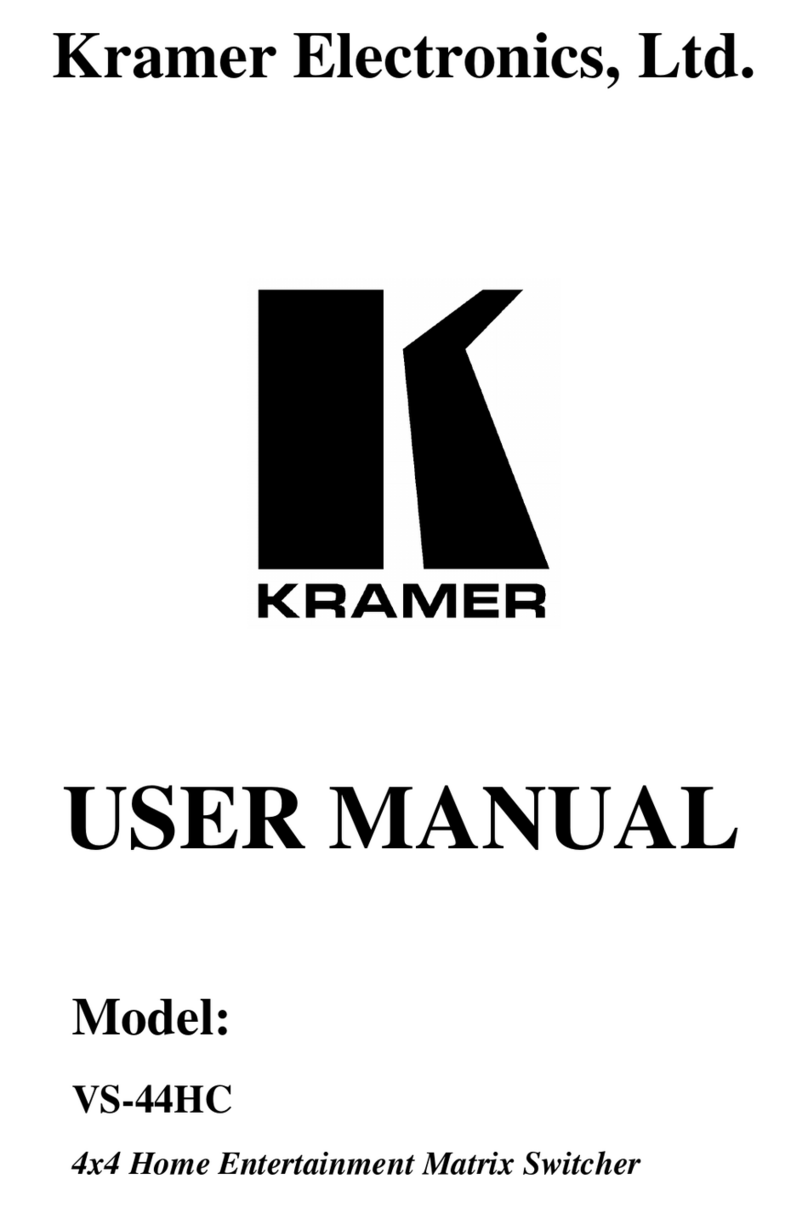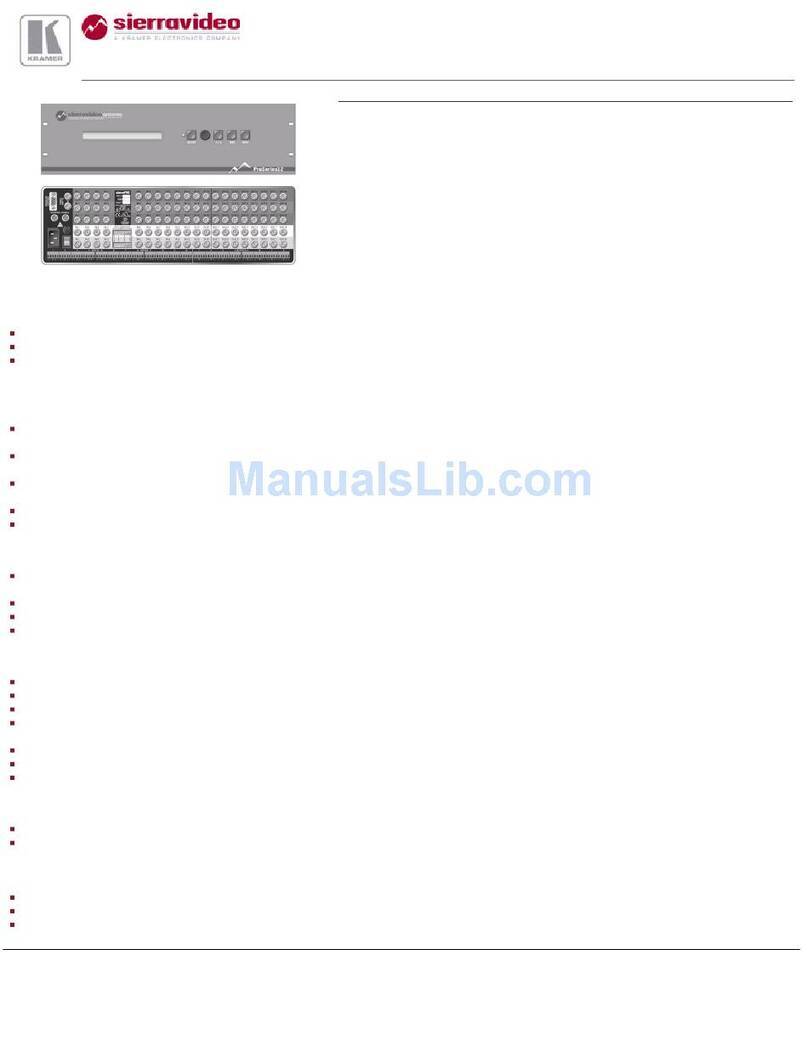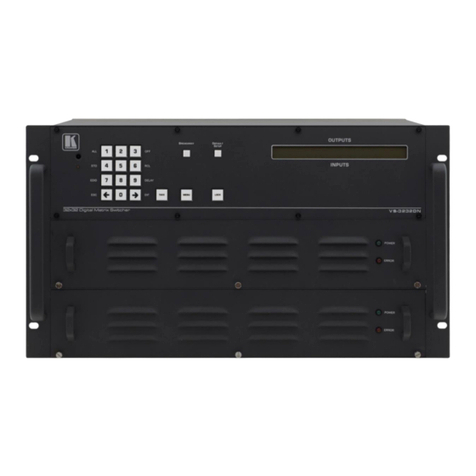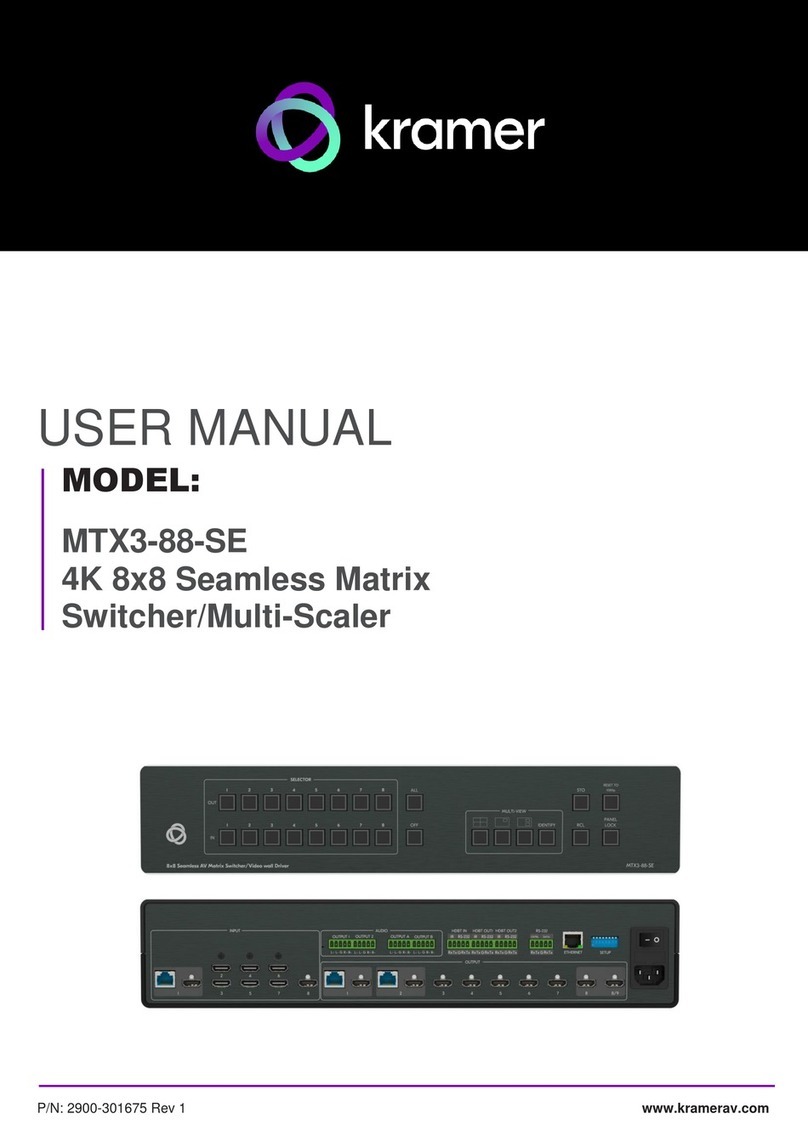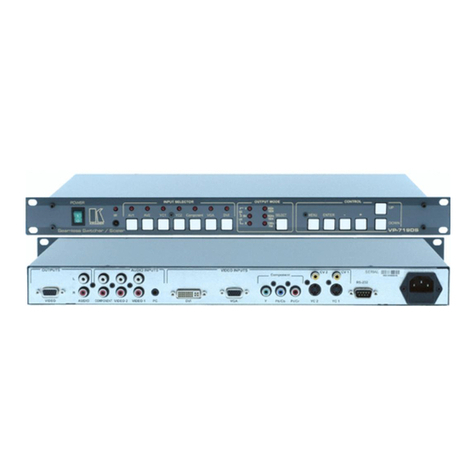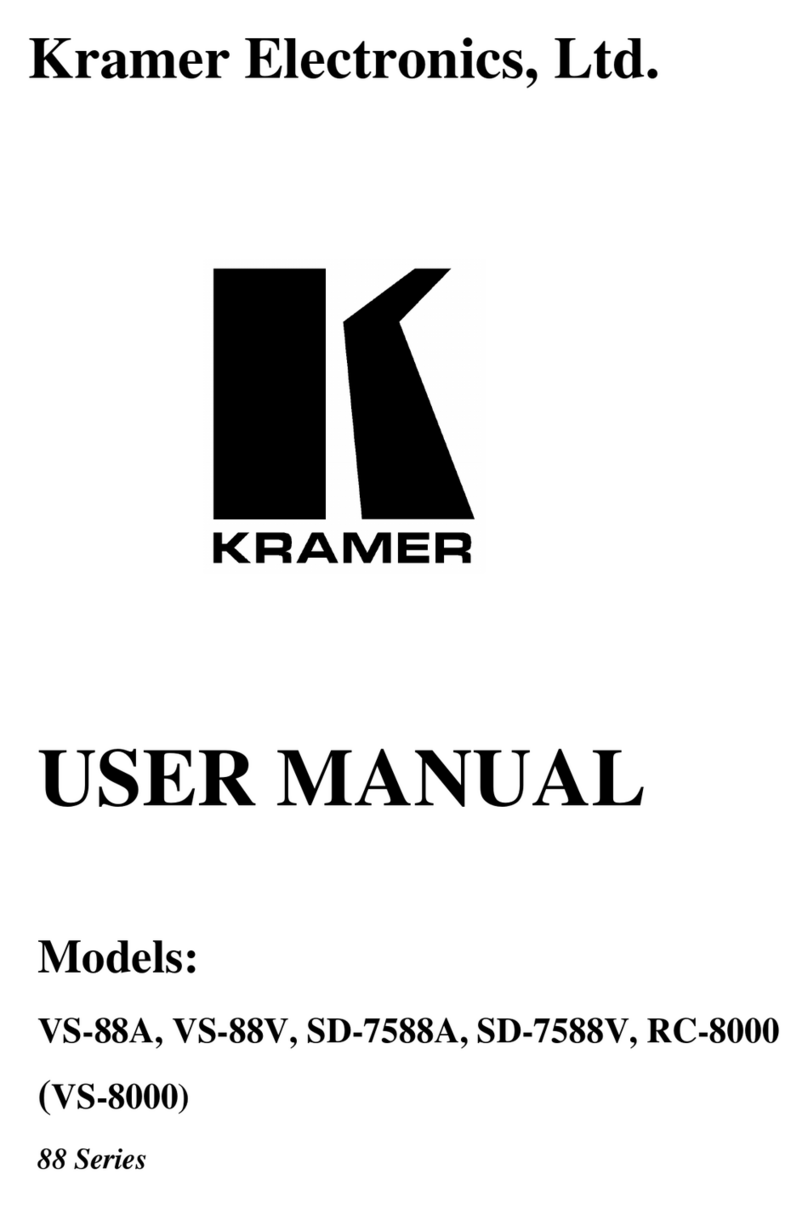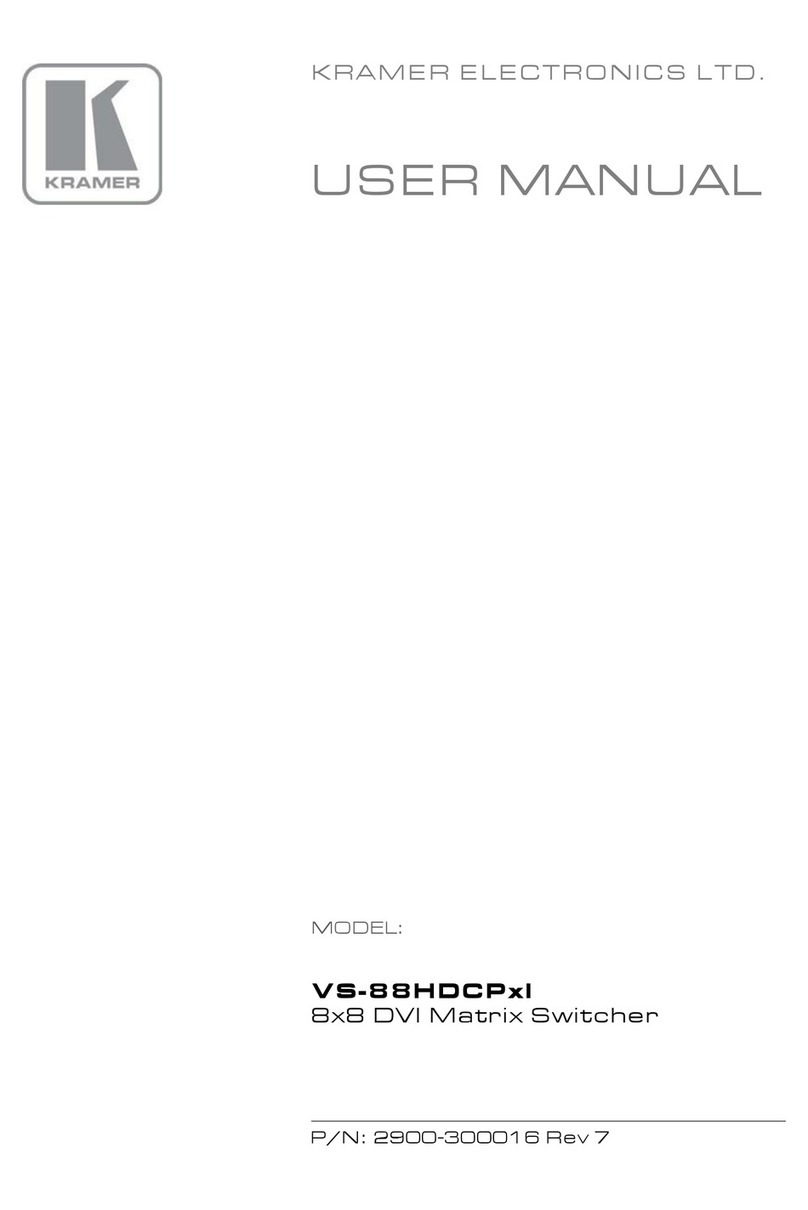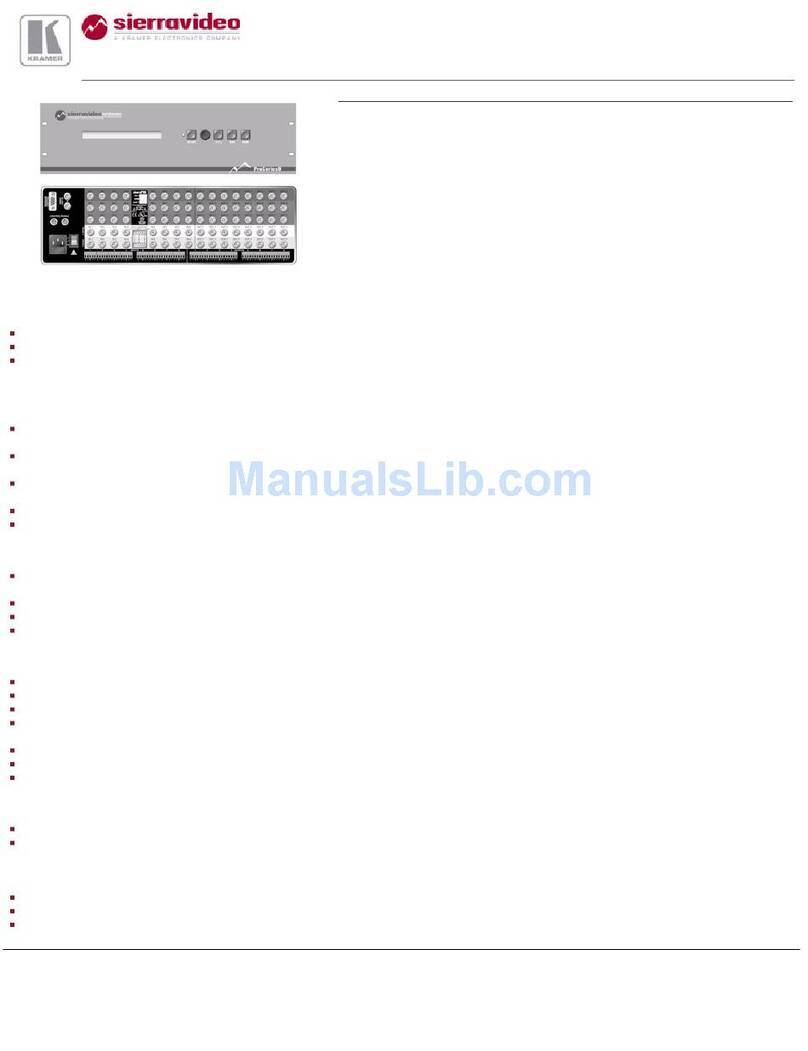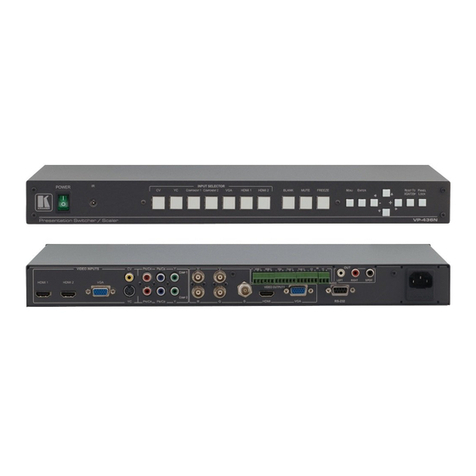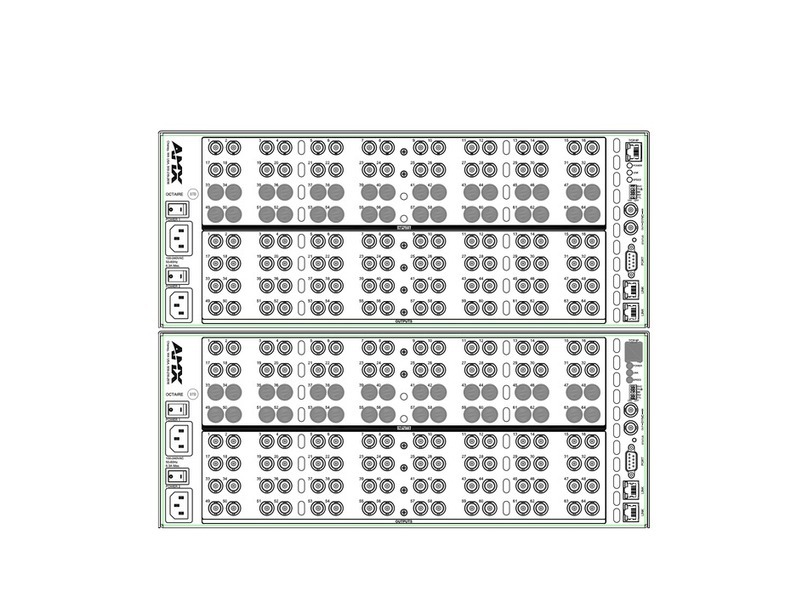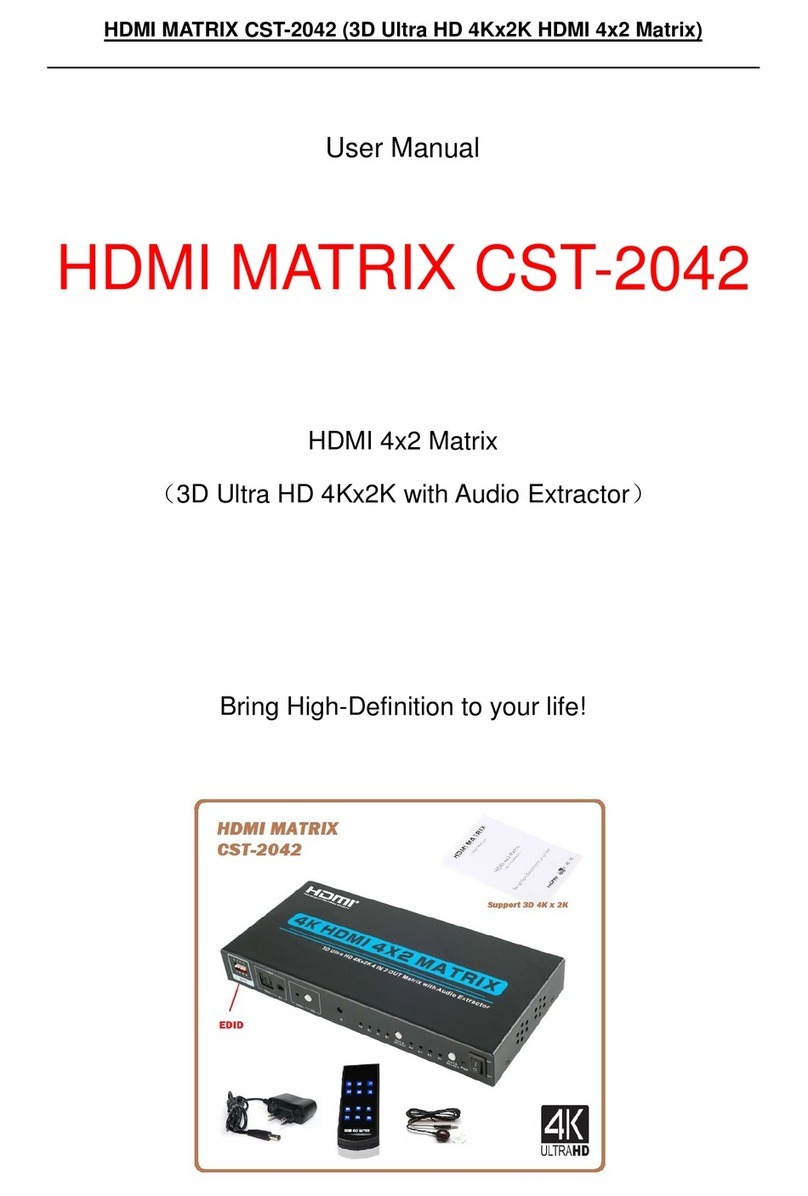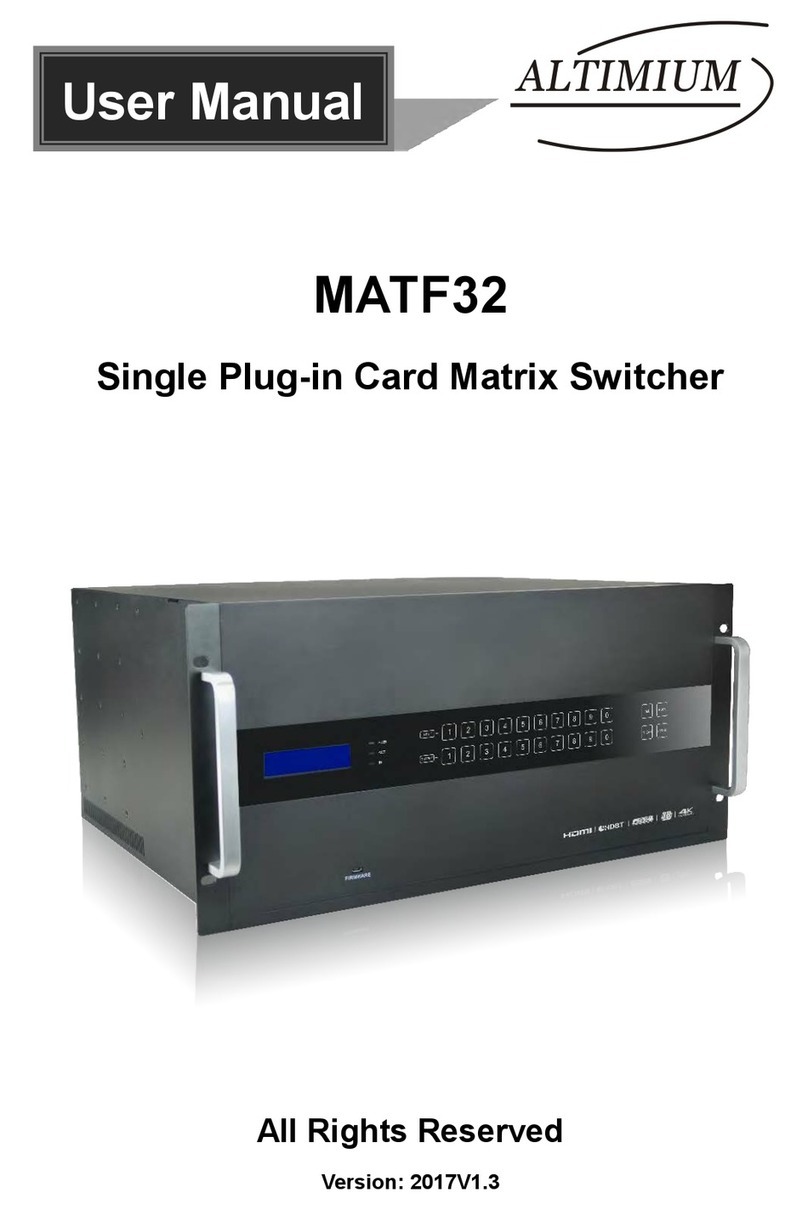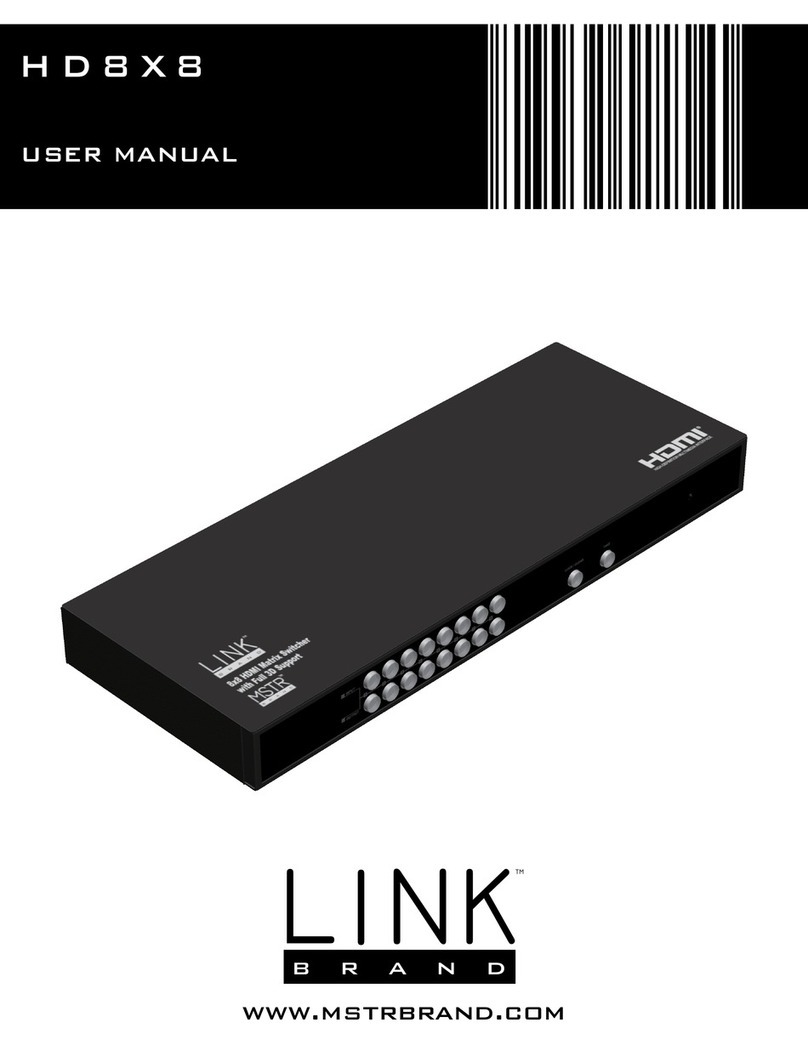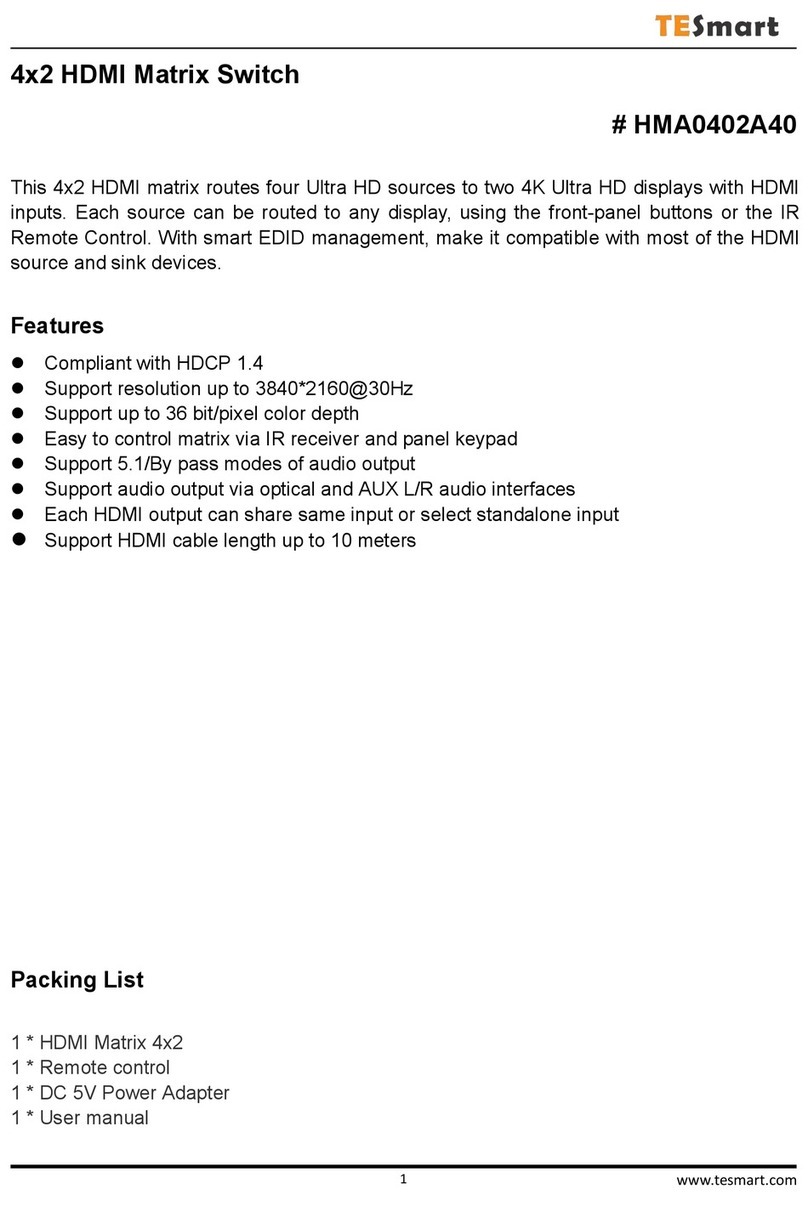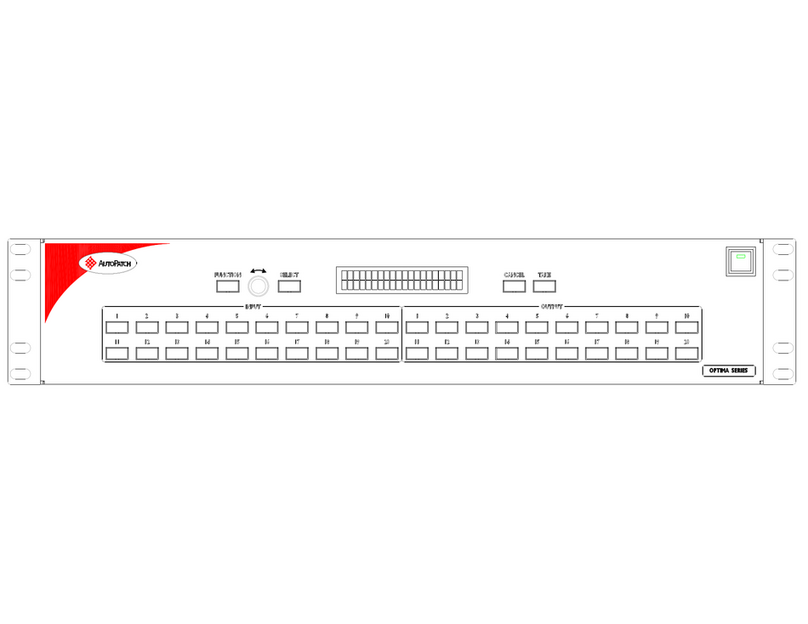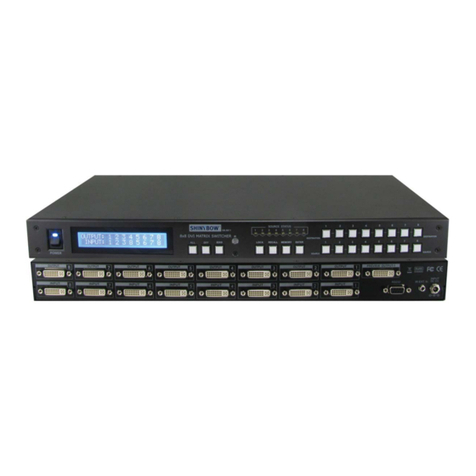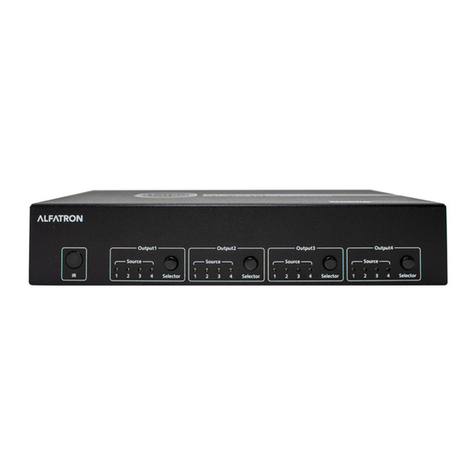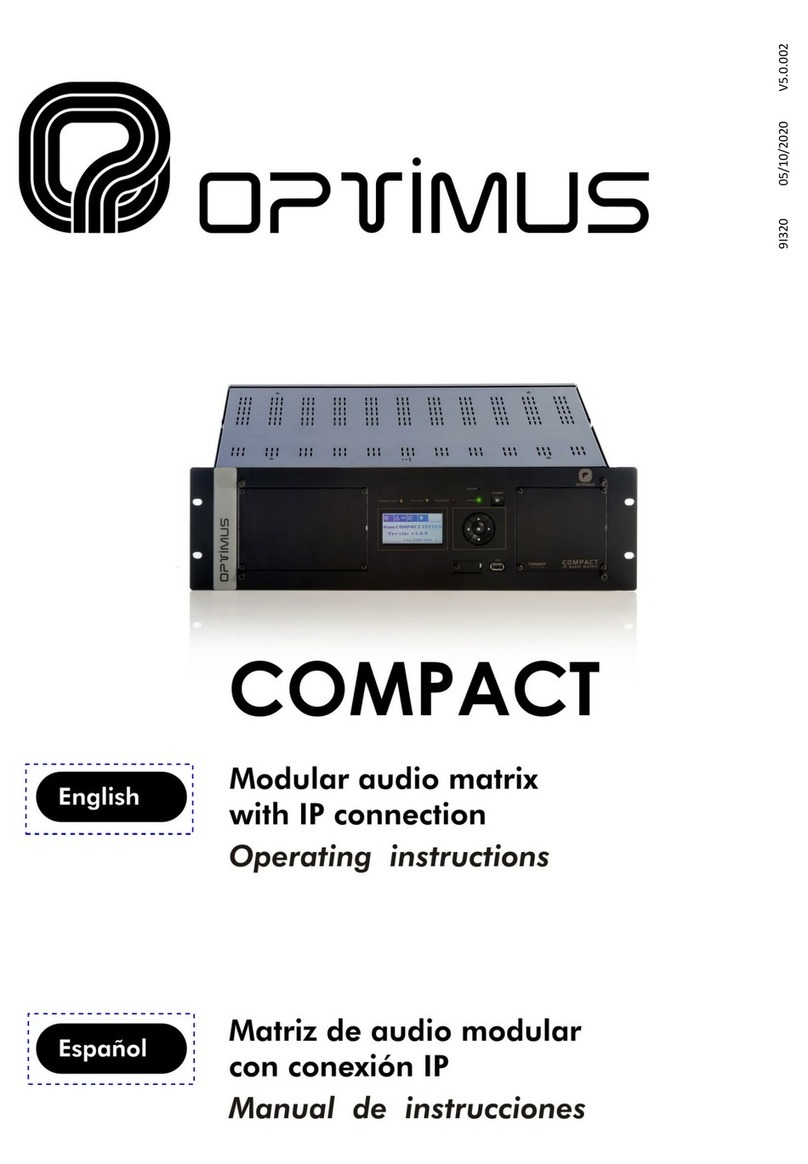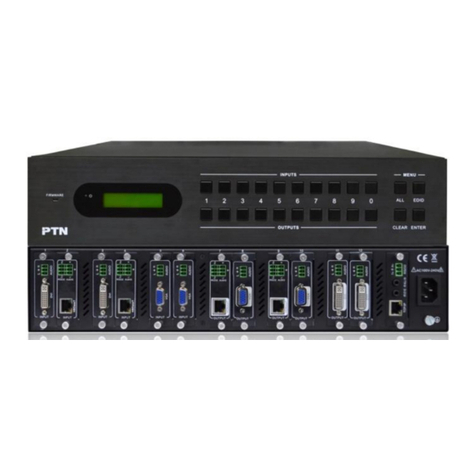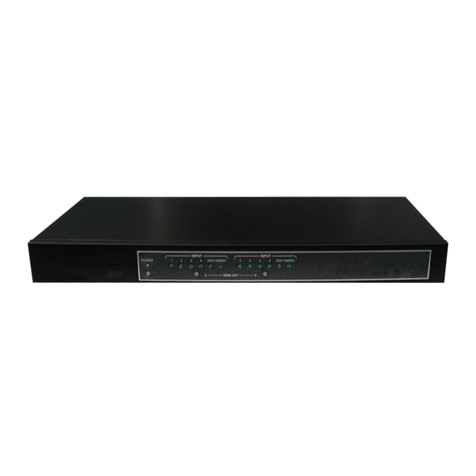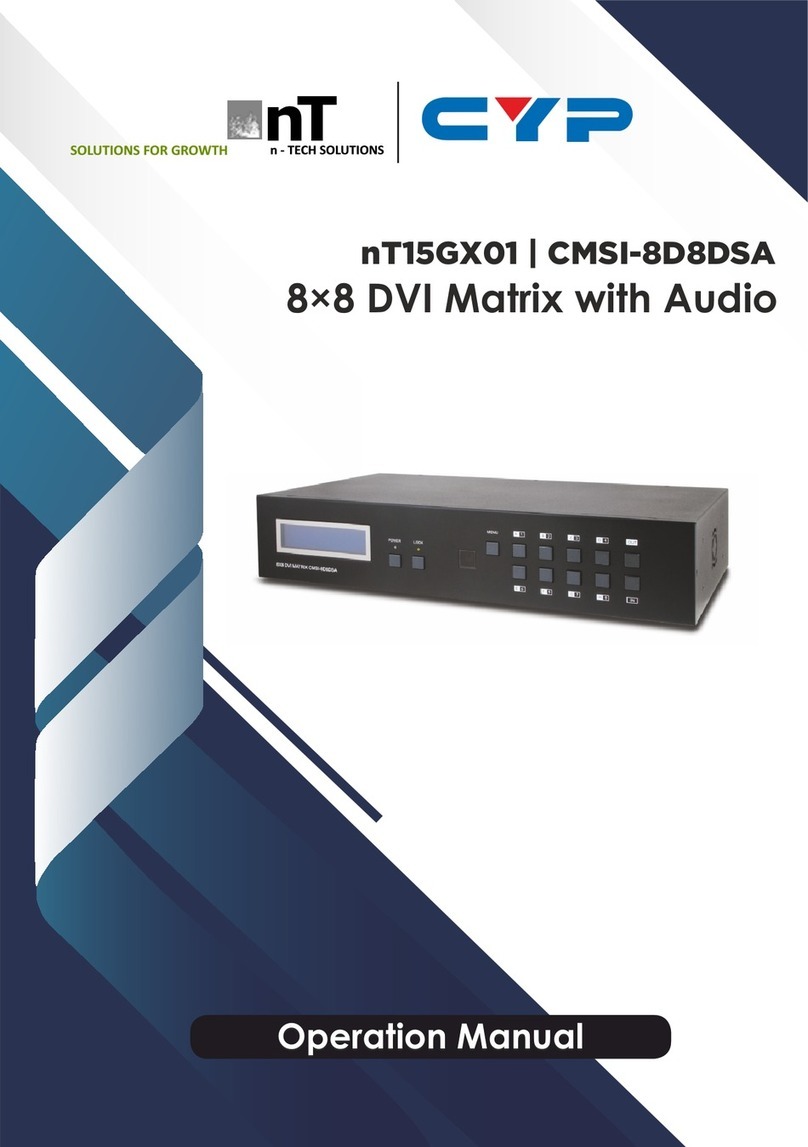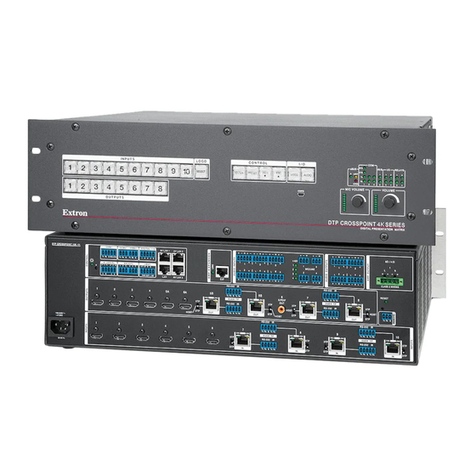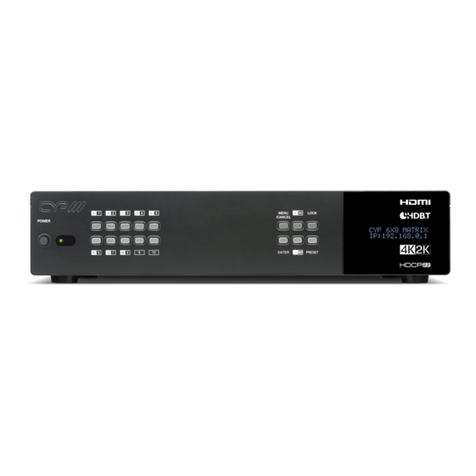Contents
1Introduction 1
2Getting Started 3
2.1 Achieving the Best Performance 3
2.2 Safety Instructions 4
2.3 Safety Instructions (Laser) 4
2.4 Compliance with Leakage Current Requirements 4
2.5 Recycling Kramer Products 5
2.6 Medical Electrical Equipment (IEC 60601-1) 5
3Overview 6
3.1 About Fast Switching 7
3.2 About HDBaseT™ Technology 8
3.3 About the Power Connect™ Feature 8
4Defining the VS-1616D-MD 16x16 Digital Matrix Switcher 9
5Installing in a Rack 14
6Connecting the VS-1616D-MD 15
6.1 Card Limitations 16
6.2 Port Numbering 17
6.3 Serial Data on DGKat Plus RS-232 Cards 19
6.4 Connecting to the VS-1616D-MD via RS-232 20
6.5 Connecting to the VS-1616D-MD via Ethernet 20
7Operating Your Video Matrix Switcher 24
7.1 Startup Display 24
7.2 Using the Selector Buttons 25
7.3 Confirming Actions 26
7.4 Switching Actions 27
7.5 Locking the Front Panel Buttons 30
8Using the Configuration Menus 31
8.1 Using the Setup Menu 32
8.2 Using the Config Menu 37
9Configuring the Number of Installed Input and Output Ports 61
10 Installing and Using the Test Module to Troubleshoot Video Problems 62
10.1 Installing the Test Module 62
10.2 Setting the Resolution of the Generated Video 63
10.3 Setting the Pattern of the Generated Video 64
10.4 Using the Test Module to Troubleshoot Video Problems 64
11 Hardware Installation Instructions 67
11.1 I/O Card Installation 67
12 Upgrading the VS-1616D-MD Firmware 70
13 Technical Specifications 71
14 Default Communication Parameters 74
15 Label Information 75
16 Factory Default EDID 76
16.1 DVI Input Card 76
16.2 HDCP Input Card 77
16.3 HDMI Input Card 79
16.4 HDMI plus Audio Input Card 81
